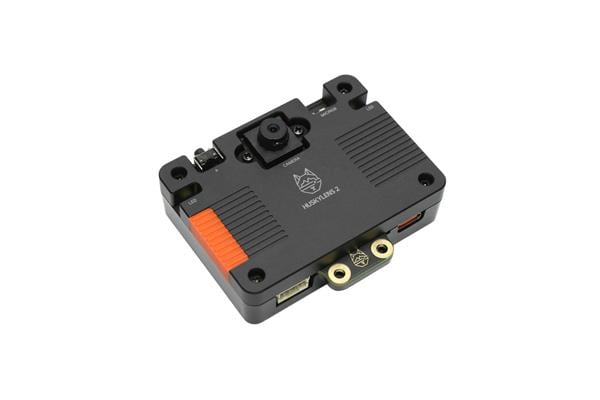What is the role of AI in Cybersecurity?
The increase in digital attacks that aim to access and destroy sensitive information of organizations of all sizes has led to the need for AI integration in cybersecurity. Some of the commonly known cybersecurity threats include Phishing, Ransomware, and Malware that all aim to steal important data or even damage the computer. To keep personal or company computers safe, the role of cybersecurity and the recent advancements to integrate AI-processes to deal with the complex cyber-attacks has grown in recent times. A recent survey showed the contribution of artificial intelligence in the cybersecurity market is projected to reach $46.3 billion, at a CAGR of 23.6% in the period of 2020 to 2027.
When we talk about the role of AI in cybersecurity, there is also a flip side to it. The manipulation of artificial intelligence technology can also increase the complexity of sophisticated cyber attacks that are better targeted to increase the damage to the target machine. Even though the ability of artificial intelligence to combat the new threats in cybersecurity is immense, the lack of understanding of the AI processes is presumed to make it challenging to evaluate the system in a unique situation. To make it a much more robust system, the AI system should be designed so that humans can check the outcomes of the system. With this, the recent advancements to integrate other technologies in security solutions like 5G and cloud-based security systems are contributing to the growth of AI in cybersecurity.
Developments in the role of AI in Cybersecurity
Artificial intelligence plays a significant role in tackling advanced cyber threats through automatic threat detection systems. As the name suggests, these systems work in the computer to keep the system safe from cyber threats to minimize damage. These types of systems are potentially used to detect dedicated denial of service attack (DDoS) attacks. This results in developing a more efficient system for threat detection and prevention. If the computer is already affected by a cyberattack, these early detections can help spot the potential vulnerability before causing any significant risk to the users.
Several websites have malware in the system, which can be detected by the AI-run models and understand the level of security required. Some of these processes cannot be done with an intelligent AI model that categorizes the threat levels and deals with them accordingly. The development of the role of artificial intelligence in cybersecurity has brought in the need for automation and regulation in keeping the digital infrastructure safe. Artificial intelligence can bring immense innovation by analyzing vast amounts of data to detect security threats in real-time.
The training of AI models through structures and unstructured data sources makes it intelligent to understand security threats and risks. Also, identifying, learning, and understanding potential threats make it far more efficient to analyze the security threats within seconds or minutes and respond to threats faster than conventional techniques. Due to the spread of the Covid-19 pandemic, organizations are revisiting the existing security strategies to adapt the AI-based cybersecurity platforms.
Some famous use cases of AI in Cybersecurity
Most of us have noticed Gmail’s filtering of spam messages in which there are several phishing threats as well. Google uses machine learning techniques that train and evolve by understanding the security threats through messages. IBM has also entered the field of implementing AI in cybersecurity through the Watson cognitive learning platform for threat detection in unusual situations. Cognitive security involves the strengths of artificial intelligence and human intelligence that can detect and analyze threats to make informed decisions with speed and accuracy. “Watson for Cyber Security, IBM’s cognitive AI, learns with each interaction to connect the dots between threats and provide actionable insights.”
When we look at the case study of IBM Watson AI cybersecurity in action at Wimbledon 2017, it is observed that the AI-based security platform provided 60x faster security threat investigations, 5x increase in the volume of security incidents analyzed, and zero breaches. Many more such incredible platforms, including the Balbix BreachControl platform, provide specialized AI models that identify and prioritize vulnerabilities to help reduce cyber risk. The BreachControl gives real-time and continuous threat detection through a customizable platform and easy integration. Adopting such powerful cybersecurity platforms requires planning and preparation as the security team can take full advantage of the technology.
Limitations to the AI integration in Cybersecurity
Even though there are many upsides to this technology expected to disrupt the cybersecurity market, there are limitations that one should know. Compared to the conventional way of protecting digital infrastructure, implementing AI in cybersecurity requires more resources in terms of finances in deploying the AI systems and time to build and maintain the AI cybersecurity solutions. In context to AI processes, the engineers and security team require extensive and complex data sets with malicious codes and malware codes to train the AI models, which can be challenging to obtain and demands more time investment.
The complexity of cyber attacks is increasing due to hyper-complexity, where all the information is interconnected. Hackers now use artificial intelligence to improve the malicious code and make it robust against AI-based security solutions. Although deployment costs increase, a new security-as-a-service (SaaS) solution can be cost-efficient for medium and small organizations.
Conclusion
There are always some downsides to any disrupting technology, and that is the time to analyze if the good supersedes the bad. Even though hackers can improve and test the malware codes, AI integration in cybersecurity is one of the best ways to protect the organization’s digital infrastructure. Optimized accuracy and reduced analyzing time with specialized AI models have made it highly efficient over conventional security solutions. The growth of the adoption of artificial intelligence in cybersecurity is because of the real-time processing of large amounts of data and early threat detection that prevents any data loss.
Before adopting the technology, the organization needs to plan and train the security team to work on customizable AI-based security platforms to optimize the outcomes. With all the benefits and limitations, protecting sensitive information and having an appropriate security solution in place is essential.




































Leave your feedback...